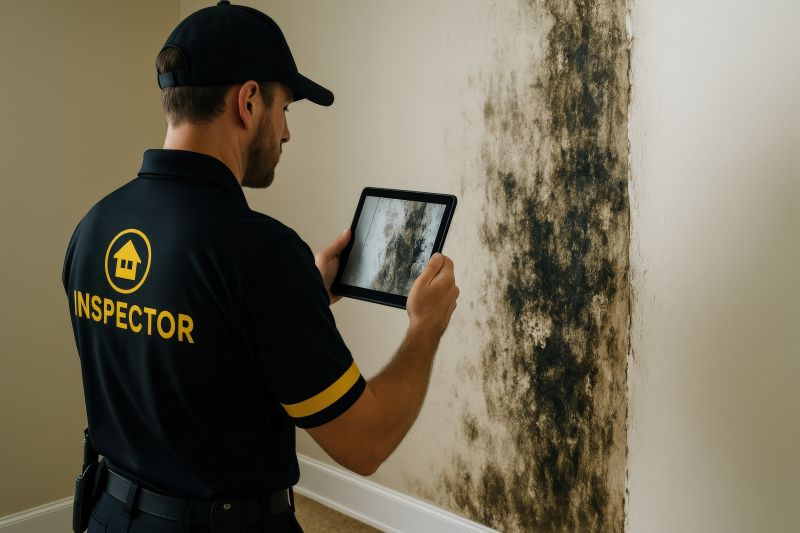Ultimate Mold Testing Products To Detect Hidden Mold Issues Easily
Utilize advanced tools crafted to uncover concealed mold growth and protect your environment effectively.
 Detecting and assessing mold presence in indoor environments is crucial for maintaining healthy living and working spaces. Mold inspection and testing products are designed to help homeowners, tenants, and professionals identify potential mold issues accurately and efficiently. These tools range from simple visual inspection aids to advanced sampling kits that analyze air and surface samples for mold spores and colonies. Proper use of these products can assist in determining whether mold is present, its extent, and if professional remediation might be necessary.
Detecting and assessing mold presence in indoor environments is crucial for maintaining healthy living and working spaces. Mold inspection and testing products are designed to help homeowners, tenants, and professionals identify potential mold issues accurately and efficiently. These tools range from simple visual inspection aids to advanced sampling kits that analyze air and surface samples for mold spores and colonies. Proper use of these products can assist in determining whether mold is present, its extent, and if professional remediation might be necessary.
Top Overall Option
Comprehensive Mold Inspection and Testing Kit
This all-in-one kit includes visual inspection tools, surface swab kits, and air sampling devices, providing a versatile solution for initial mold assessment. Designed for ease of use, it enables users to perform basic testing and collect samples for laboratory analysis, making it suitable for homeowners and DIY enthusiasts seeking a thorough overview of potential mold issues.
Types of Products For Mold Inspection And Testings
Visual Inspection Flashlight
A powerful flashlight designed to illuminate dark corners and hidden areas where mold might be concealed.
Infrared Thermographic Camera
A device that detects temperature variations indicating moisture buildup behind walls or ceilings.
Surface Swab Test Kits
Kit for collecting surface samples to be sent to laboratories for mold identification and analysis.
Air Quality Testers
Devices that sample indoor air for mold spores and particulate matter, providing immediate readings or samples for lab testing.
Moisture Meters
Tools that measure the moisture content in building materials to identify potential mold hotspots.
DIY Mold Test Kits
Complete kits that allow users to collect air or surface samples for laboratory analysis at home.
HEPA Air Purifiers
Air purifiers equipped with HEPA filters to reduce airborne mold spores in indoor environments.
UV Light Inspection Devices
Tools that use ultraviolet light to reveal mold growth on surfaces not easily visible to the naked eye.
Mold Test Tape
Adhesive tapes used to lift mold spores from surfaces for microscopic examination.
Electrostatic Dust Collectors
Devices that attract and trap airborne mold spores and dust particles for analysis.
Portable Mold Detectors
Compact devices suitable for quick spot checks in various indoor environments.
Laboratory Analysis Services
Professional services that analyze collected samples to identify mold types and concentrations.
Popular Choices
Devices that provide real-time readings of airborne mold spores and particulate levels.
Easy-to-use kits for collecting surface samples to send for lab analysis.
Tools that help locate hidden moisture behind walls and in ceilings.
Complete kits designed for non-professionals to collect air samples for mold testing.
Devices that reveal mold growth on surfaces using ultraviolet light.
Air filtration units capable of reducing airborne mold spores in indoor spaces.
Adhesive tapes for collecting samples from surfaces for microscopic examination.
Portable pens that quickly identify moisture presence in building materials.
Devices that trap airborne spores and dust particles for analysis.
Compact, handheld devices for quick spot checks of mold presence.
Professional testing services for detailed mold identification and levels.
Many mold testing products are user-friendly, allowing individuals without specialized training to perform basic assessments. Visual inspection tools, such as moisture meters and infrared cameras, help locate hidden mold behind walls or under flooring by detecting temperature differences or moisture accumulation. Sampling kits, including air samplers and surface swab kits, provide samples that can be sent to laboratories for detailed analysis, offering insights into mold types and concentrations.
Choosing the right mold testing products depends on various factors, including the scope of inspection, budget, and whether professional laboratory analysis is desired. While DIY testing can provide initial indications, comprehensive assessments often require professional testing services. Regular inspection and testing can be valuable in early detection, preventing long-term health issues and property damage caused by mold growth. Investing in reliable testing products ensures more informed decisions about mold management and remediation efforts.
Key Buying Considerations
- Type of testing: visual inspection, air sampling, surface testing, or laboratory analysis.
- Ease of use: whether the product is suitable for DIY use or requires professional assistance.
- Sample collection method: surface swabs, air pumps, or passive collection devices.
- Laboratory analysis options: availability of lab services for detailed results.
- Detection sensitivity: the ability of the product to detect low levels of mold spores.
- Portability: handheld or compact devices for convenience and mobility.
- Speed of results: immediate readings versus samples sent for lab testing with longer turnaround.
- Cost considerations: balancing budget with the comprehensiveness of the testing method.
- Compatibility with existing tools: integration with moisture meters or infrared cameras.
- Product reviews and ratings: insights from other users about reliability and accuracy.
- Safety features: non-invasive methods and materials that minimize disturbance.
- Frequency of testing: whether the product is suitable for regular inspections or one-time assessments.
- Documentation and reporting: clarity of results and ease of understanding.
- Calibration and maintenance: requirements for keeping the device accurate over time.
- Brand reputation and support: availability of customer service and technical assistance.
